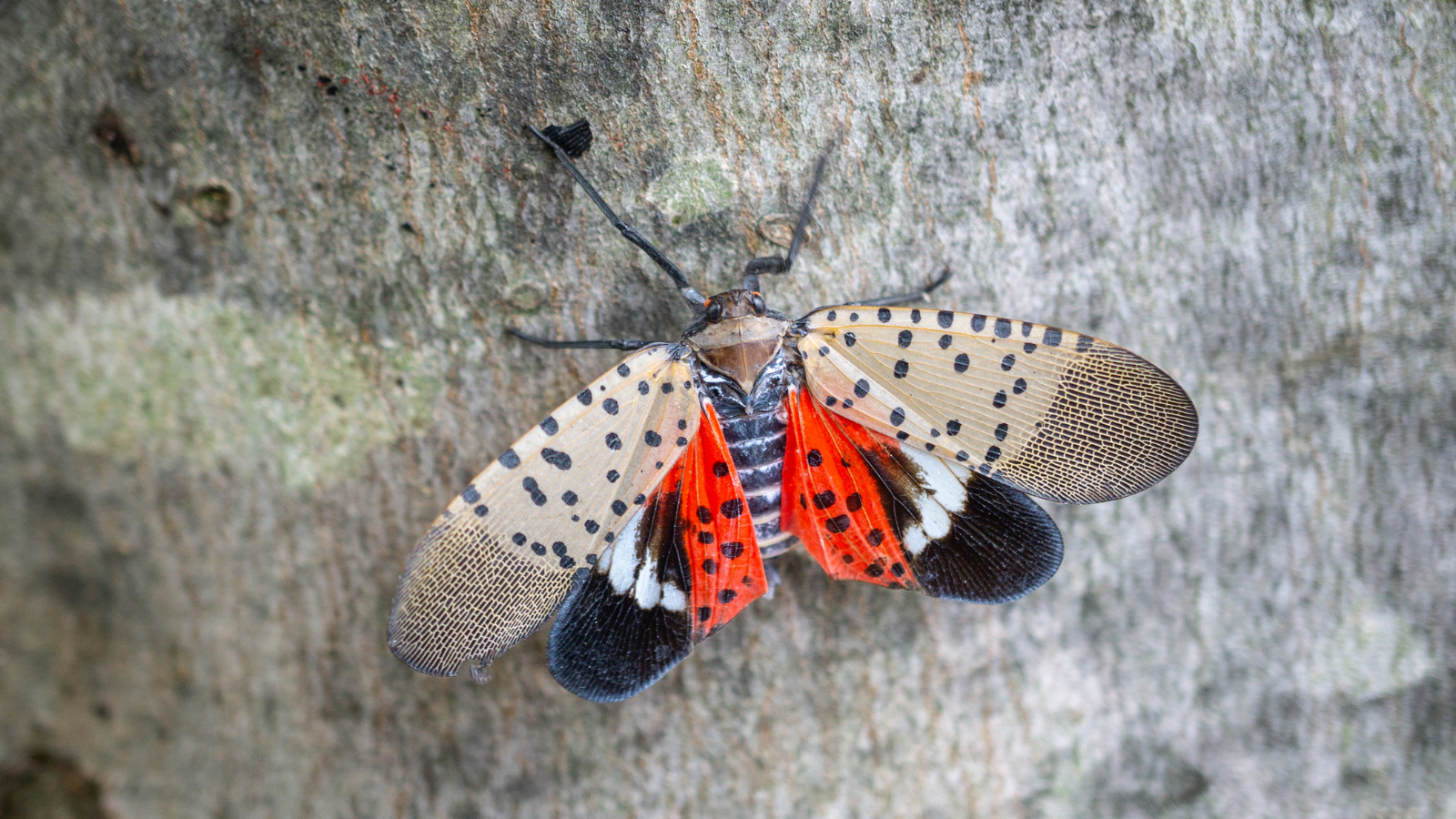Connecticut Scientists Make Breakthroughs in Fight Against Invasive Insect
By Joe O’Leary
December 30 @ 5:00 am

In the last few years, there’s been an unwelcome presence spreading throughout Connecticut, but local scientists are developing a new method to stop them – and if they succeed, they can turn the tide against the scourge nationally.
According to the Connecticut Agricultural Experiment Station, the spotted lanternfly has been infiltrating North America for about a decade. Native to China, India, and Vietnam, the insect made its first Northeastern U.S. appearance in Pennsylvania and has slowly spread throughout the region. It was discovered in Connecticut in 2018, then became established in the state in 2020.
Most visible from July to November, the flies have tan, red and black patches on their white wings which are often covered in black spots, which is how they get their name.
Scientists are very concerned about the impact the invasive pest will have on Connecticut’s agriculture and wildlife, specifically plant life. Referred to as “probably the most serious agricultural pest to hit US shores in a long time,” a spotted lanternfly infestation can kill a vineyard and cause serious damage to trees. The flies can weaken plants by eating their sap, diminishing their ability to collect energy through sunlight, and in the process they spur the creation of mold, further harming the plants. Trees and crops that aren’t killed by lanternflies are often weakened and see their output reduced.
In addition to having a direct impact on quality of produce and plant life in Connecticut, the CAES even noted its further spread could lead to other countries rejecting agricultural imports if they suspect they could be contaminated with the flies.
As many as half of Connecticut’s trees could be threatened by spotted lanternflies, which makes the ability to respond and fight back vital. Until now, experts have encouraged a brute-force approach to fighting lanternflies, advising members of the public to look for them and kill them on sight. However, the CAES may have found a significant breakthrough to ease the fight.
In December, the CAES announced its scientists had developed a new method to identify specific odors spotted lanternflies use to find host plants and other insects. By tracking how spotted lanternflies respond to different odors they experience, scientists believe they’ll be able to find some new ways to counter the insects’ impact.
“This knowledge will not only aid in the development of targeted attractants or repellents but also contribute to the overall effort to protect our ecosystems and agricultural resources from this insect,” said CAES Chemical Ecologist Dr. Hany Dweck.
Scientists were able to track the responses of lanternflies to odors from their favorite trees and determine how responses differed for different trace levels of those odors. The resulting findings have revealed new avenues to control lanternfly populations in the 17 states currently dealing with infestations.
“Invasive species have the potential to wreak havoc on our ecosystems, and any action to repel them from Connecticut’s natural beauty, not to mention state agriculture, is vital,” said Sen. Rick Lopes, Senate chair of the state legislature’s Environment Committee. “I’m looking forward to the developments that may result from this new research breakthrough.”
Share this page: